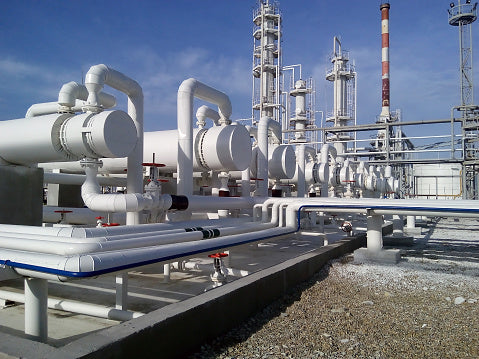Heat exchangers are those types of devices that transmit energy in the form of heat from one working medium to the next, whether the working fluids be solids, liquids, or gasses. Heat exchangers, which come in a variety of forms and sizes and can both inject and remove heat, are crucial for refrigeration, power production, HVAC, and other applications. Understanding what distinguishes one heat exchanger from another may be challenging; therefore, with this article, you would be able to learn about the common heat exchangers, the shell and tube heat exchangers.
What are Tube Shells and Heat Exchangers?
Simply described, a shell tube heat exchanger is a system that uses tubes contained within an exterior hollow cylinder to bring two working fluids into heat exchange. These two vital channels are often made of thermally conductive metals that facilitate heat transmission. The tubes transport fluid from their entrance to their output, while the shell transports a different fluid over them. The pipe, or a number of tubes, controls how much surface area is exposed to the shell-side flow and, as a result, how much heat is transported. Shell and heater exchangers are among the most efficient heat exchangers because they are simple to construct, operate, and provide great heat transmission.
How Do They Work?
Shell and tube heat exchangers are made to move a hot fluid through a cold fluid without mixing them, allowing just their heat to be transmitted. The tube-side flow goes through the tubing, which is held by metal plates known as tube sheets or tubeplates and leaves the tube outlet in a shell and tube exchanger. The shell side of the tube begins at the shell intake, travels through these tubes, and ends at the shell outlet. The headers present on either side of the tube bundle serve as storage for the tube-side flow, and they can be divided into portions based on the kind of heat exchanger.
Each tube of this device has something called a 'turbulator insert' that creates turbulent flow through the tubes, which avoids sediment buildup, or "logging," and boosts the heat transfer capacity of the exchanger. Designers also utilize slats to create turbulence in the shell, which increases the amount of thermal mixing between the shell-side fluid and the coolant pipes. The liquid on the shell side must find its way around the baffles, causing the flow to pass over the tube bundle several times; energy is transmitted and exiting the heating element at a temperature lower than usual.
Single-phase or two-phase shell and tube heat exchangers also exist. A single-phase heat exchanger maintains the fluid's phase throughout the operation, such as when initial moisture enters and exits, but a device that is a two-phase exchanger causes a phase shift throughout the heat transfer process. For example, the steam enters the tube, and liquid water leaves. These devices can also be single-pass or multi-pass, referring to how many times the pipe and casing flow travels through the device.
Types Of Shell and Heat Exchangers
The Tubular Exchangers Manufacturers Association regulates the standard forms of a shell and tube heat exchanger that are present to consumers in the market. They divide all shell and tube heat exchanger designs into three parts: the front-end header, shells, and back part header, and assign letters to each. There are mainly three types of shell and heat exchangers –
- U-Tube Exchanger - The tube bundle of this kind is made up of continuous tubes that bend into a U shape and are attached to the shell by a single tubeplate. Coolant runs from the top half of the header down via the u-tubes and out the bottom half, resulting in a design that is multi-pass.
- Floating Head Exchanger - A fixed tube sheet holds one end of the tubes immovable to the housing of a Floating Head Exchanger, while the other side is free to expand thanks to a floating tube sheet component. This component of this design allows the tubes to broaden as the temperature increases without bending the pipes.
- Fixed Tube Sheet - Two stationary tube sheets are welded directly to the shell in the fixed tube sheet exchanger. Since they're the easiest to build, they are the least expensive iteration of the shell and tube design.
Read More: Types of Foulings in Plate Heat Exchanger

